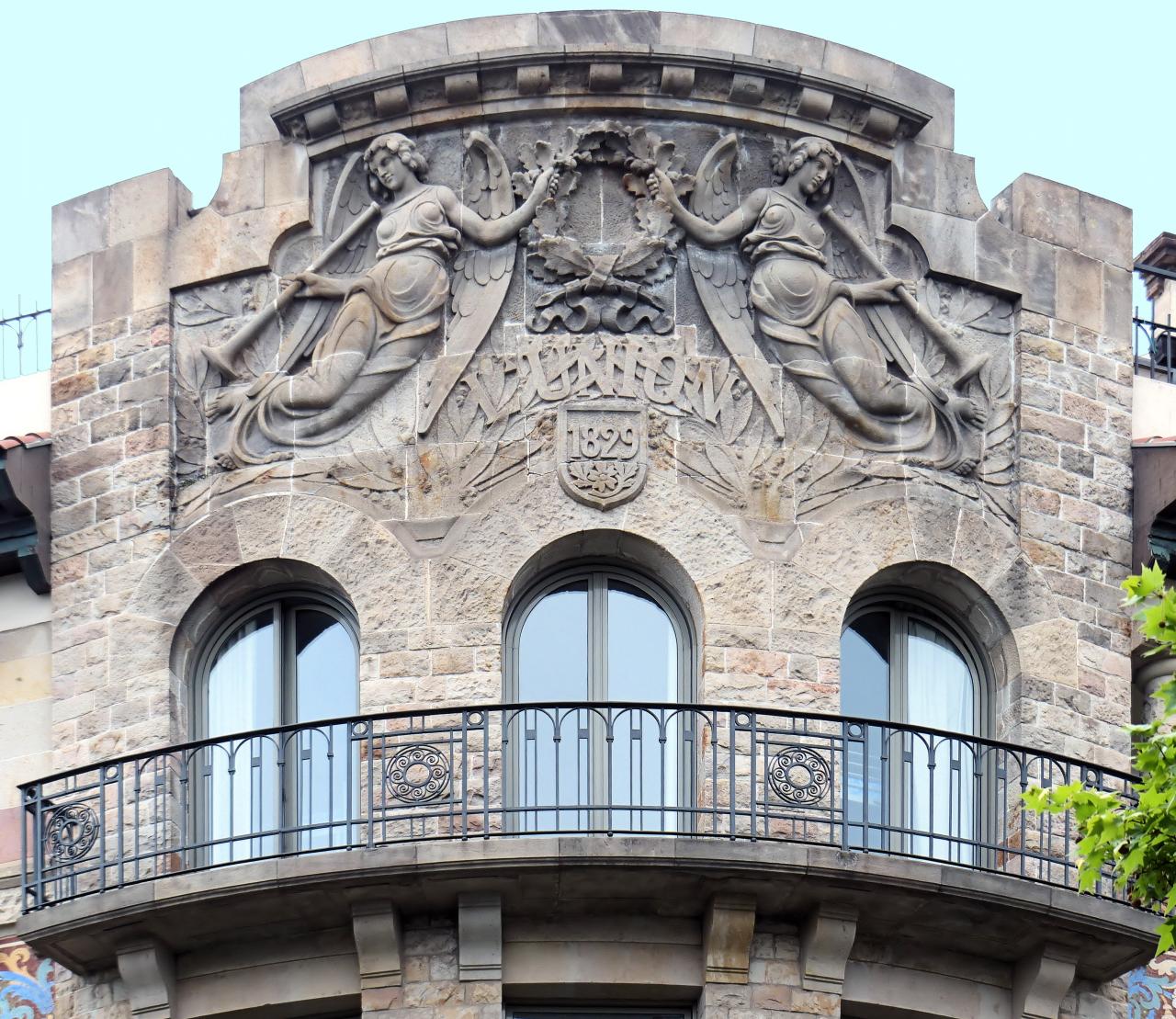#2216. Angel Façade: An Elegant Example of Art Nouveau with Neoclassical Motifs from 1829
The image showcases a magnificent example of early 20th century architecture with elements of Art Nouveau and Neoclassicism. The façade is constructed from natural stone in sandy hues, giving the building a sense of monumentality and warmth simultaneously.
The central element of the composition is an exquisite semi-circular balcony with wrought iron railings adorned with ornamental medallions. Above the balcony sits an impressive relief frieze featuring two symmetrical sculptural figures depicting angels or allegorical winged figures. The sculptures are executed in a classical manner, with draped clothing creating an effect of movement and lightness.
In the center of the frieze, the date "1829" is visible, likely indicating the year of the building's original construction or a significant historical milestone. However, the stylistic solution of the façade is more characteristic of the Art Nouveau period (late 19th - early 20th century), which may indicate a reconstruction of an older building.
The architectural ensemble is complemented by three elegant arched windows beneath the balcony, creating a rhythmic composition and emphasizing the curvilinearity of this section of the façade. The meticulous attention to detail and the combination of decorative elements with functionality make this façade a striking example of European urban architecture of its time.
